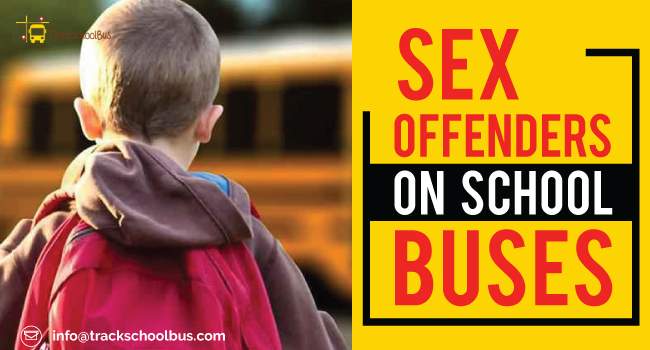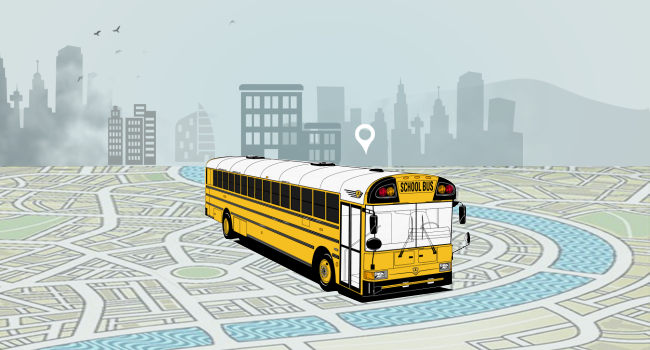Sexual offenses are of different types. Rape, child molestation and sexual abuse are the most common. Rapists commit rape, child molesters sexually abuse minors and sexual abuse is forceful sexual contact.
Sex offenders use different modus operandi to lure or abduct their victims. Children are innocent and are unable to comprehend a predator’s actions.
Read Also: How School Bus Drivers Can Protect Special Needs Students From Getting Bullied
Sex offenders can be found on the school buses and off the school buses at bus-stops and near schools.
Sex offenders on school buses
Sex offenders manage to get on the school buses mainly when it has been parked at locations or when the driver leaves the bus unattended for a short while. This happens mostly when the children go out on field trips or school picnics.

Sex offenders, mainly interested in molesting children, pry open the doors of the bus or simply walk in. They hide behind the bus where the driver’s visibility is low. It is horrifying for all to find an offender amidst a bunch of students.
It is now mandatory that the drivers do a walk-through of the bus while entering or exiting a bus. This ensures that no one has entered and that the seats are empty. He has to do a front- to- back check of the bus before he lets the children in.
In some cases, the sex offender steals a school bus and drives it along the route found in the bus. This happens when the keys are left on the bus. Bus drivers have to take extra care to see that the keys are off the bus and the windows and doors are locked before he leaves the bus.
Sex offenders off school buses
School bus stops are normally decided upon by taking into consideration parental demands as well as traffic regulations. The potential hazard mostly overlooked is the proximity of the bus stops to sex offender’s homes.

It is dangerous to have children wait unsupervised near homes of habitual offenders with a past history of sexual abuse. Sexual predators stalk and abduct children. Locating stops at such places are causes for trouble.
School districts while charting the routes and fixing stops do not always succeed in steering clear of sex offender proximity. But they do heed to parental concerns and shift the stops as per their request.
Pre-cautions
A register with the police provide a list of sex offenders in a particular area. School districts can access them before fixing stops. These lists are available to transportation personnel and the public.
Several states publish data online with details of name, street address and photo and even criminal history of the sex offender. They are categorized as low, medium and high risk offenders. Medium and high-risk offenders are those who have committed violent crimes or who repeat offenses.
School officials are entitled to view this list. Parents and community members can access this list. It would be advisable to consult all parties concerned before a stop is fixed or moved. This will help in reducing potential danger to the children.
As the parent it would be advisable to do a pre-emptive check on the neighborhood for any sex offenders residing there. All registered offenders do not pose a threat as they may not be involved with children. It would be pertinent to be constantly aware of them and to not instigate a problem with them.
Parents have to chaperone their children to the bus-stop however inconvenient it may be. Chaperoning duties can be shared among parents of children using the same bus stop.
Even if the bus stop is moved from the vicinity of a sex offender he will still be in the neighborhood. Hence it would be wise to escort the child to the bus stop daily to ward off any unwanted situations.
Read Also: How School Bus Drivers Can Help Protect Disabled Children
School districts are to be notified by parents of any danger to their child’s safety. If alerted promptly the bus stops can be moved.
Each school district being different, the policy on sex offenders differ. It is best the parents update themselves and be aware of the policies.
Software used in school bus routing and scheduling have functions that alert the user when the bus stop is close to that of a registered offender. The application treats the student similar to that living on a hazardous road and creates a bus stop in front of the student’s residence.
Educating children, parents and community members about the possible predatory behavior of child molesters is essential. Distributing pamphlets, information, public announcements to parents, students, teachers, school staff, the care givers can create awareness of the potential problems. Persons who are frequently in touch with children should be wary and pay attention to any such individuals.
Educating the young students about the threats they may face from the apparently friendly strangers and known persons is necessary. Children of all ages have to be educated on unnatural behavior in an age-appropriate manner that they can comprehend.
Punishment
Sexual conduct against a child, predatory sexual assault, stalking a child, using a child in sexual acts, distributing indecent material to children, luring a child, aggravated assault on a child and persistent sexual abuse are crimes of sexual exploitation.
The maximum penalty for these crimes against children is 15 years of imprisonment and the minimum sentence is probation depending on the crime.
If the sex offender is a driver, they are permanently disqualified or banned for 5 years depending on the severity of the action.
Behavioral aspects
To detect sex offenders who are not registered is not easy. They skillfully manipulate the child, family and community with kindness and charm. His behavior is attributed to normal adult-child relations. His deviant intentions go unnoticed.
The sex offender gains access to the vulnerable child, gains the child’s trust, and assures the child’s secrecy to avoid disclosure. He will try to isolate the child from the rest.

Child molesters seek jobs that bring them into contact with children. They come as teachers, bus drivers, coaches or even counselors. In professional capacities the molester has access to the child alone after school hours or on field trips.
The chances of convicted sex offenders repeating an offense cannot be gauged accurately. Professionals dealing with them admit that a good number of them do re-offend.
Read Also: How to Prevent the Threat of School Bus Hijacking
Adult sex offenders are found unlikely to change in behavior even with counseling and help. Experts say that most of the offenders repeat if not given professional help.
No amount of technology can completely protect children from harmful situations. School and parents have to work together to offer protection to the children.








